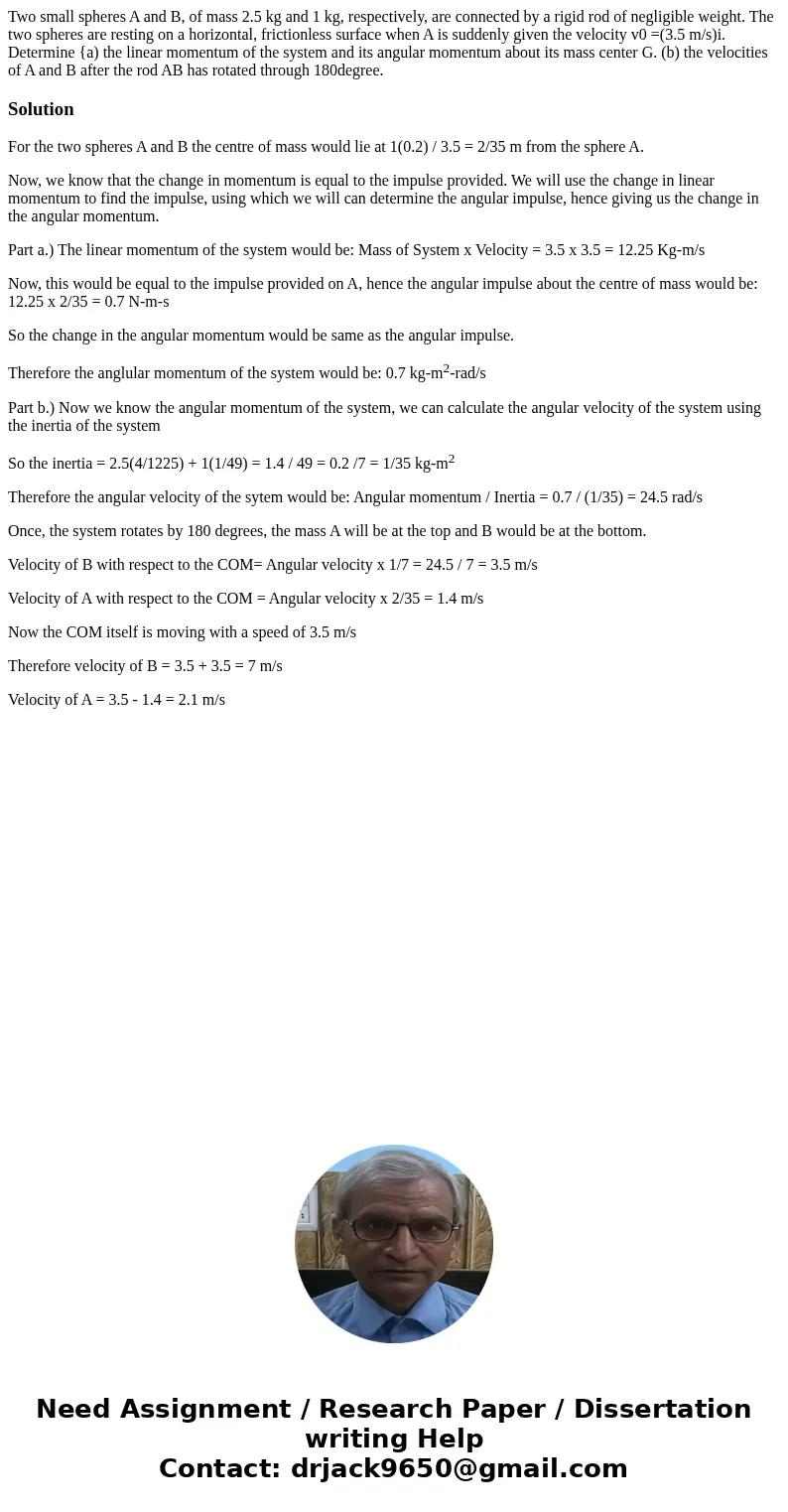Two small spheres A and B of mass 25 kg and 1 kg respectivel
Solution
For the two spheres A and B the centre of mass would lie at 1(0.2) / 3.5 = 2/35 m from the sphere A.
Now, we know that the change in momentum is equal to the impulse provided. We will use the change in linear momentum to find the impulse, using which we will can determine the angular impulse, hence giving us the change in the angular momentum.
Part a.) The linear momentum of the system would be: Mass of System x Velocity = 3.5 x 3.5 = 12.25 Kg-m/s
Now, this would be equal to the impulse provided on A, hence the angular impulse about the centre of mass would be: 12.25 x 2/35 = 0.7 N-m-s
So the change in the angular momentum would be same as the angular impulse.
Therefore the anglular momentum of the system would be: 0.7 kg-m2-rad/s
Part b.) Now we know the angular momentum of the system, we can calculate the angular velocity of the system using the inertia of the system
So the inertia = 2.5(4/1225) + 1(1/49) = 1.4 / 49 = 0.2 /7 = 1/35 kg-m2
Therefore the angular velocity of the sytem would be: Angular momentum / Inertia = 0.7 / (1/35) = 24.5 rad/s
Once, the system rotates by 180 degrees, the mass A will be at the top and B would be at the bottom.
Velocity of B with respect to the COM= Angular velocity x 1/7 = 24.5 / 7 = 3.5 m/s
Velocity of A with respect to the COM = Angular velocity x 2/35 = 1.4 m/s
Now the COM itself is moving with a speed of 3.5 m/s
Therefore velocity of B = 3.5 + 3.5 = 7 m/s
Velocity of A = 3.5 - 1.4 = 2.1 m/s

 Homework Sourse
Homework Sourse